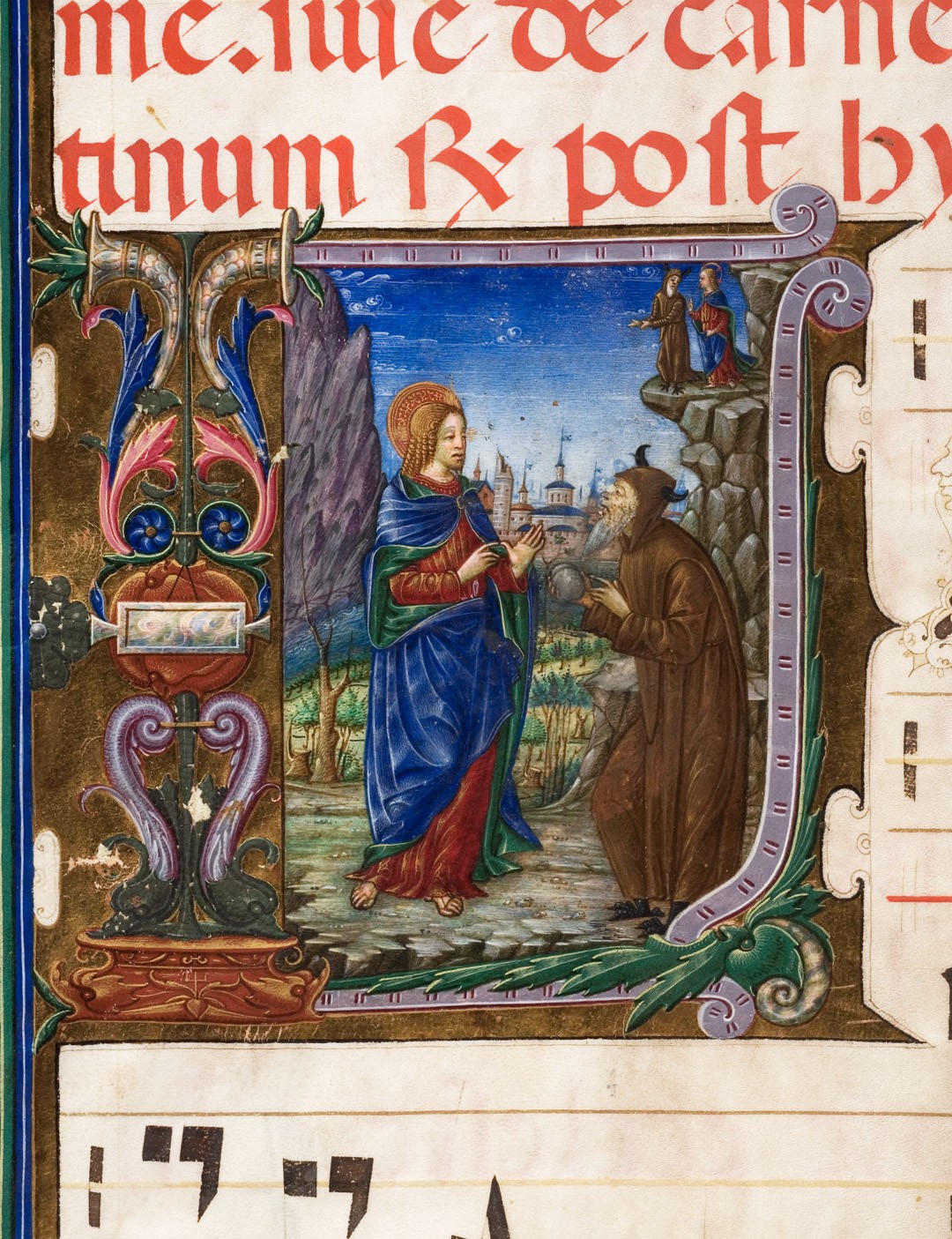Hidden treasures

CORONATION MISSAL OF GIAN GALEAZZO VISCONTI
The most famous book in the archive is the Coronation Missal of Gian Galeazzo Visconti (M 6), the lord of Milan’s princely homage to the basilica where, on 5 September 1395, he was made Duke of Milan by the envoy of Emperor Wenceslaus. Richly decorated with splendid illuminations produced in the workshop of Anovelo da Imbonate, who signed the volume, the missal was completed in the year 1400 and reflects the ambitions of the powerful lord, who aspired to celebrate his (hoped-for) future coronation as King of Italy with the texts contained in this masterpiece.

LETTERS OF MARTINO CORBO
This precious collection of original letters in medieval Latin, written in the twelfth century by the provost of the clergy house, canon Martino Corbo and his numerous correspondents, including his friends from Regensburg, Paul and Gebhard, attests to the political and religious unrest in the city and the Milanese Church at the time, as well as the vibrant cultural atmosphere of the Basilica’s scriptorium, where Martino supervised the production of a complete ‘edition’ of all the saint’s writings (five codices, with the shelfmark M 31 to M 35).

LETTERS OF ST CLARE OF ASSISI
Preserved in a small, unassuming codex, written in Gothic script in Prague in about 1340, the four letters written by Clare of Assisi between 1230 and 1240 to Princess Agnes, daughter of King Ottokar I of Bohemia, to support her in her decision to live in abject poverty and in the service of the poor, accompany the Life of Agnes that was written to persuade the Roman Curia of the case for her canonisation. The reason for the arrival of the manuscript at the Basilica of Sant’Ambrogio remains shrouded in mystery.

CRESCENZAGO CHOIR BOOKS
The Crescenzago Choir Books (M 45–M 50), six fascinating Ambrosian antiphonaries filled with splendid miniatures and refined decoration, were commissioned between 1487 and 1491 by the provosts Giacomo Marliani and Federico Sanseverino for the clergy house church of Santa Maria Rossa in Crescenzago. Shortly after, the Crescenzago church passed to the Lateran canons, who observed the Roman rite, and so these codices were given to the clergy house canons of St Ambrose, where they were used for community prayer until the modern period.

THE PARCHMENT OF THE ST SATYRUS’S DAY LUNCH
This archiepiscopal decree of 1148, complete with a splendid wax seal (one of the very few preserved), confirms the right of the canons to receive, every year on 17 September, the feast of Ambrose’s brother St Satyrus, a sumptuous lunch from the nearby monks in exchange for the service of opening the golden altar. Standing out among the nine dishes of this three-course meal is lumbolos cum panicio, which, according to some historians, was the medieval ancestor of today’s Milanese ‘cotoletta’ or cutlet.

THE SCROLLS OF THE DISPUTES BETWEEN THE MONKS AND CANONS
These two celebrated parchment scrolls, which measure fourteen and ten metres in length, respectively, collect the evidence presented in the year 1200 by the canons and monks of Sant’Ambrogio during a major suit to resolve the decades-long disputes that were plaguing the two communities. Together, they offer a vivid snapshot of everyday life in and around the saint’s basilica.

ST AMBROSE’S ‘DALMATICS’
In the Middle Ages, these two large pieces of silk fabric from different periods (the fourth and seventh centuries) were believed to be the saint’s liturgical vestments, in particular an alb and a dalmatic. They are exceptional, complex evidence of how material objects connected to Ambrose were transformed into venerated relics, preserved outside the saint’s tomb.



